Physical Address
304 North Cardinal St.
Dorchester Center, MA 02124
Physical Address
304 North Cardinal St.
Dorchester Center, MA 02124

Google has released a new episode of its Search Central Lightning Talks, which focuses on rendering strategies, an important topic for web developers.
In this video, Martin Splitt, Developer Advocate at Google, explains the intricacies of different rendering methods and how these approaches affect website performance, user experience, and search engine optimization (SEO).
This episode also ties into the recent debates about excessive use of JavaScript and its effects on AI search engines, topic previously addressed by Search Engine Journal.
Split’s insights offer practical guidance for developers looking to optimize their websites for modern search engines and users.
Splitt begins by explaining what rendering means in the context of web pages.
He explains rendering in simple terms, saying:
“Rendering in this context is the process of pulling data into a template. There are different strategies on where and when that happens, so let’s look together.”
In the past, developers directly edited and uploaded HTML files to servers.
However, modern websites often use templates to simplify the creation of pages with similar structures but different content, such as product listings or blog posts.
Splitt categorizes rendering into three main strategies:
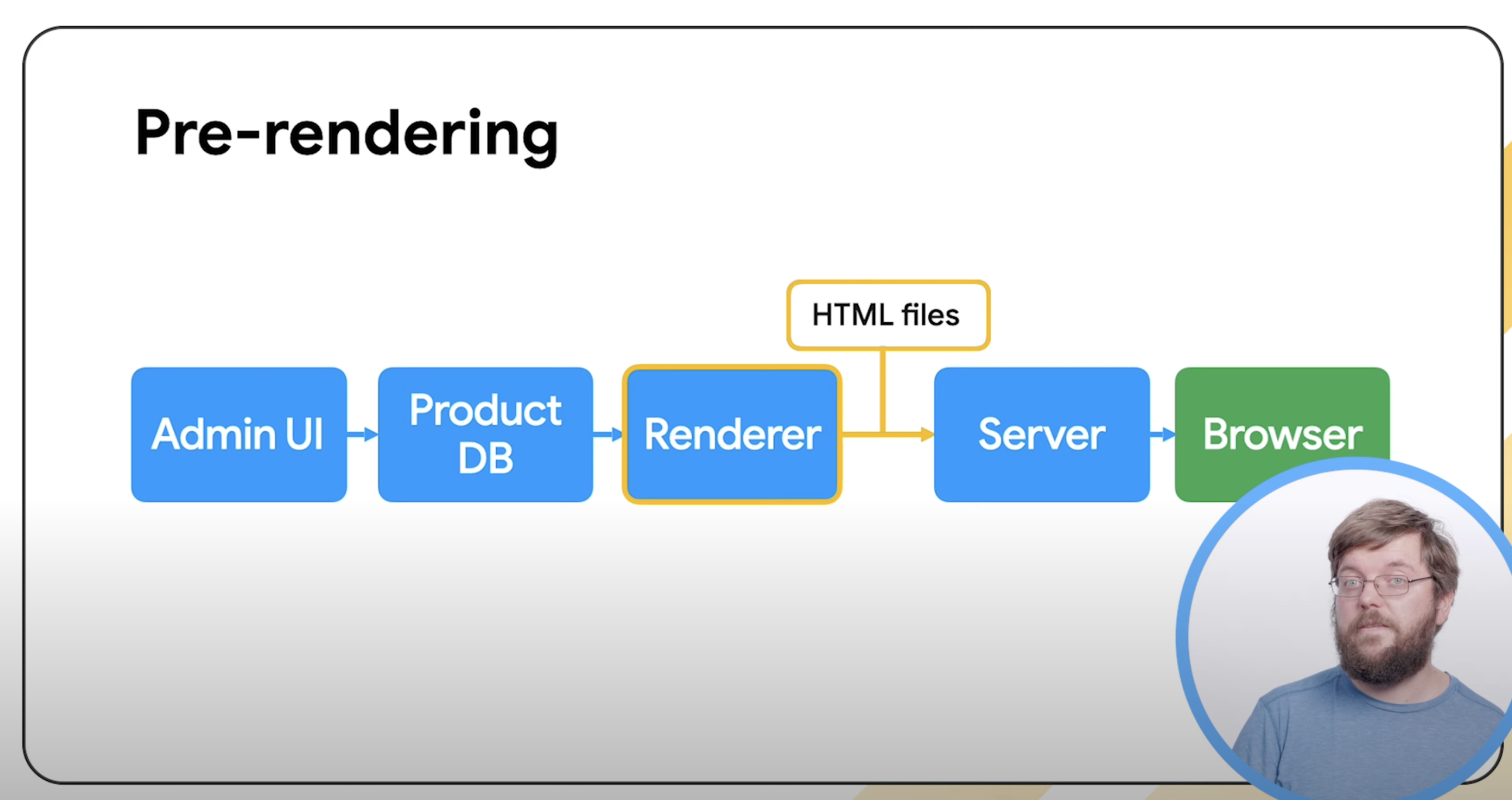 Screenshot from: YouTube.com/GoogleSearchCentral, January 2025.
Screenshot from: YouTube.com/GoogleSearchCentral, January 2025.Pre-rendering, also known as static web page generation, pre-generates HTML files and serves them to users.
Splitt highlights its simplicity and security:
“It’s also very robust and very secure, since it doesn’t interact much with the server, and you can lock it down pretty tight.”
However, he also notes its limitations:
“It also cannot respond to the interactions of your visitors. So it limits what you can do on your website.”
Tools like Jekyll, Hugo, and Gatsby automate this process by combining templates and content to create static files.
Advantages:
Disadvantages:
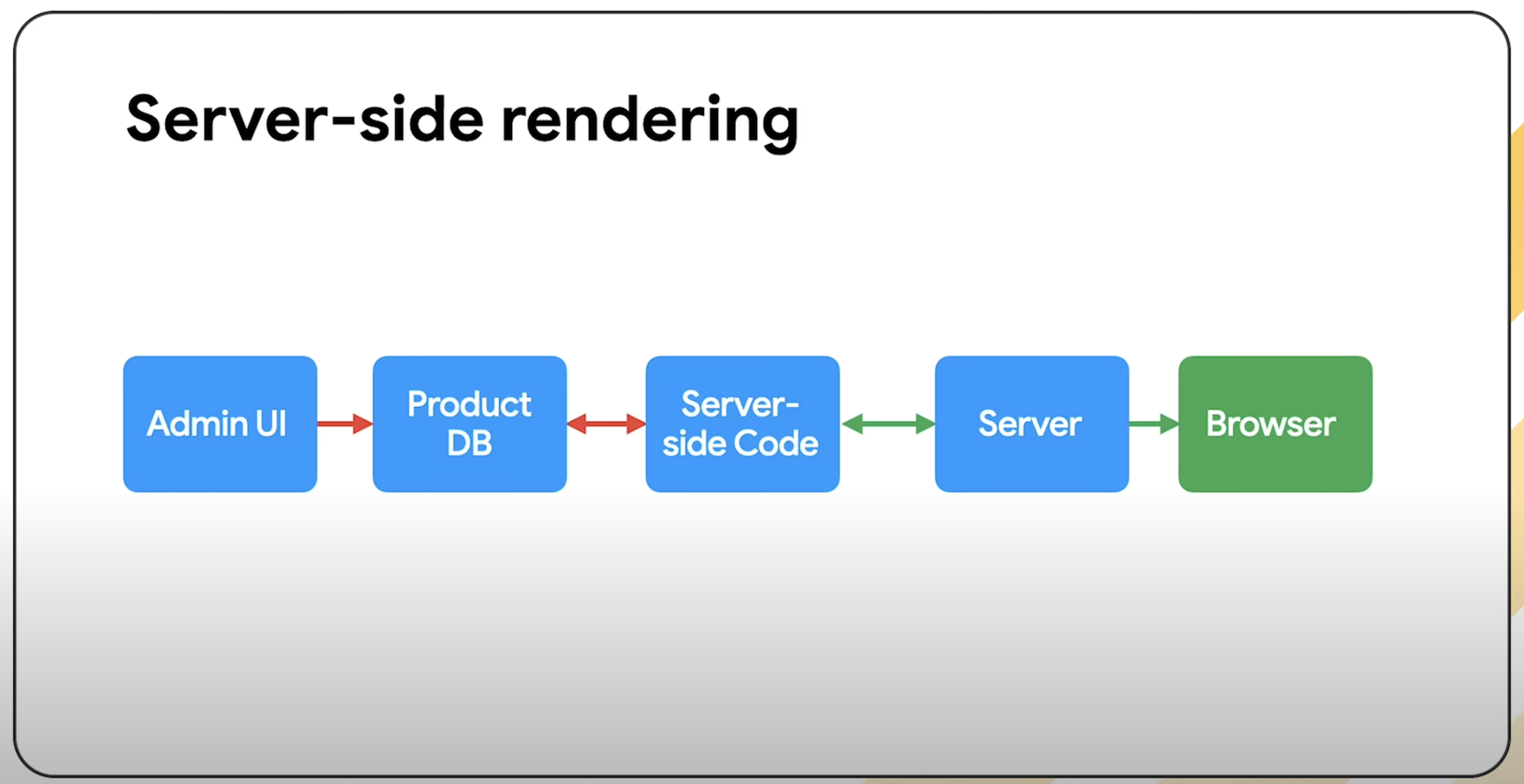 Screenshot from: YouTube.com/GoogleSearchCentral, January 2025.
Screenshot from: YouTube.com/GoogleSearchCentral, January 2025.Server-side rendering dynamically renders web pages on the server each time a user visits a website.
This approach allows websites to deliver personalized content, such as user-friendly dashboards and interactive features, such as comment sections.
Split says:
“The program decides things like URL, visitor, cookies and other things – what content to put in which template and return it to the user’s browser.”
Splitt also highlights its flexibility:
“It can react to things like a user’s login status or actions, like signing up for a newsletter or posting a comment.”
But he admits its shortcomings:
“The setup is a bit more complex and requires more work to keep it secure, as user input can now reach your server and potentially cause problems.”
Advantages:
Disadvantages:
To reduce resource requirements, developers can use caching or proxies to reduce redundant processing.
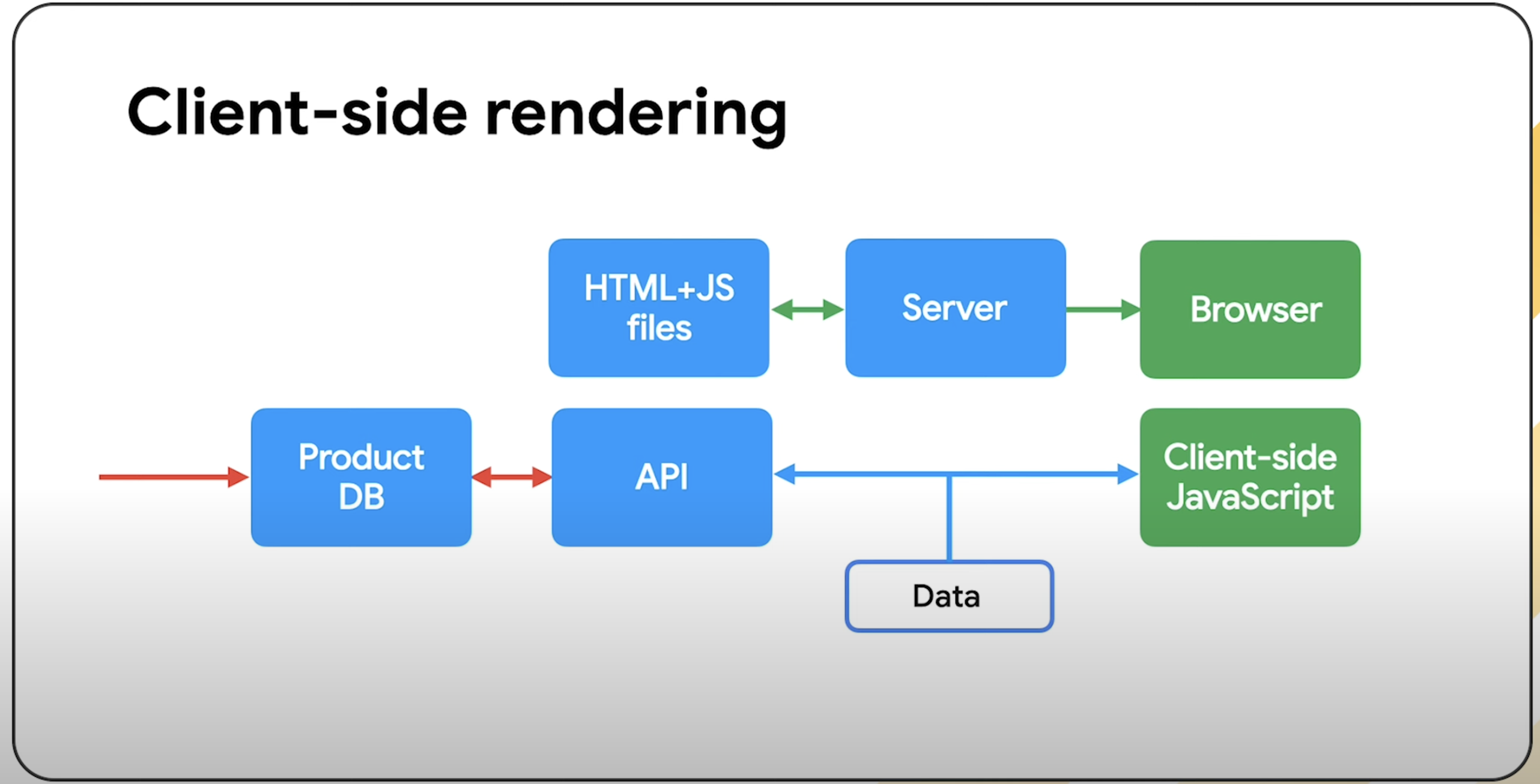 Screenshot from: YouTube.com/GoogleSearchCentral, January 2025.
Screenshot from: YouTube.com/GoogleSearchCentral, January 2025.Client-side rendering uses JavaScript to retrieve and display data in the user’s browser.
This method creates interactive web pages and web applications, especially those with real-time updates or complex user interfaces.
Splitt highlights its app-like functionality:
“Interactions look like they’re in the app. They happen smoothly in the background with no visible page reload.”
However, he warns of the risks:
“The main problem with CSR is usually the risk that, if something goes wrong during transmission, the user won’t see any of your content. It can also have SEO implications.”
Advantages:
Disadvantages:
Splitt suggests a hybrid approach called “hydration” to improve SEO.
In this method, the server first renders the content, and then client-side rendering handles further interactions.
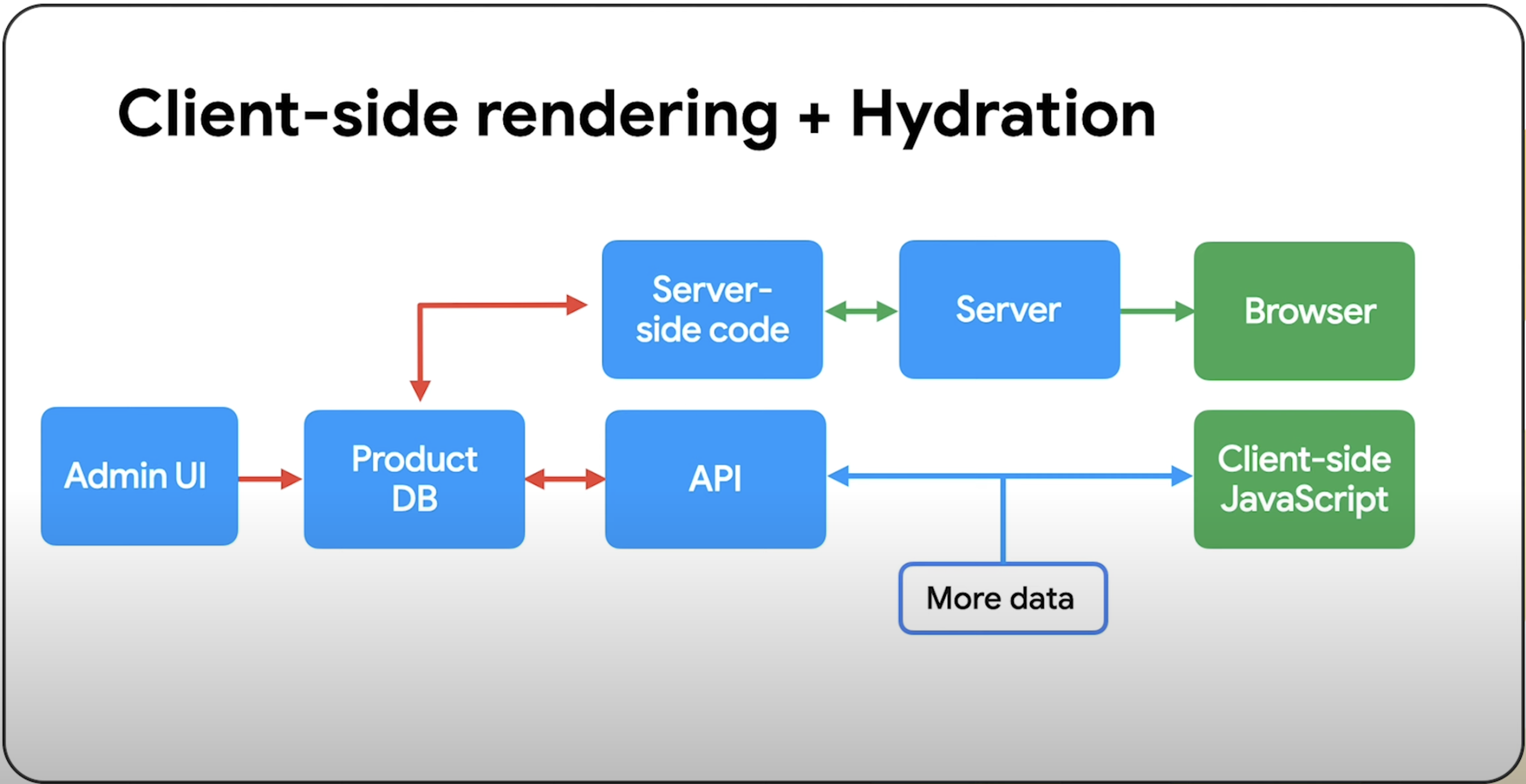 Screenshot from: YouTube.com/GoogleSearchCentral, January 2025.
Screenshot from: YouTube.com/GoogleSearchCentral, January 2025.Splitt points out that there is no one-size-fits-all solution for creating a website.
Developers should consider what a website needs by looking at specific factors.
Split says:
“Ultimately, it depends on a bunch of factors, like what does your website do? How often does the content change? What type of interactions do you want to support? And what resources do you have to build, run, and maintain your setup?”
It provides a visual summary of the pros and cons of each approach to help developers make informed decisions.
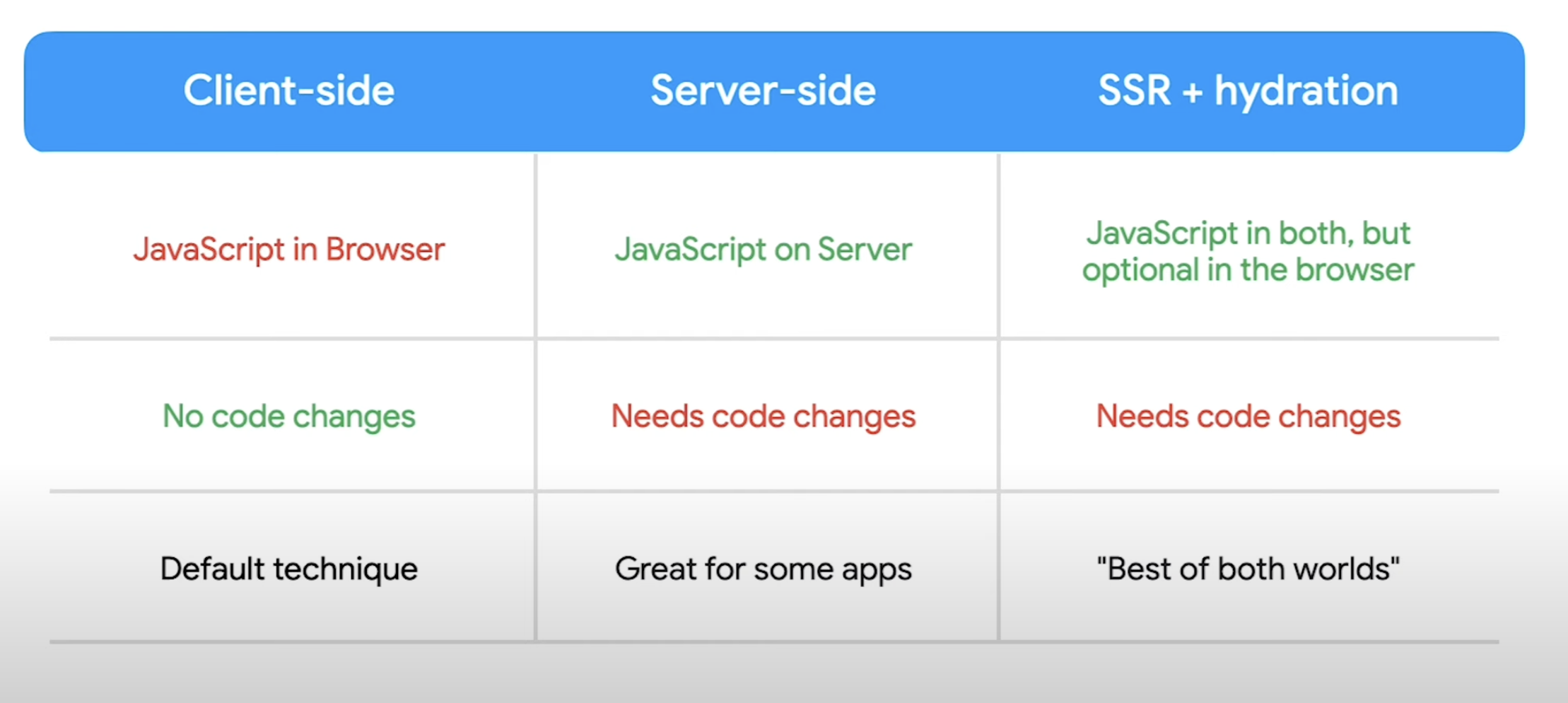 Screenshot from: YouTube.com/GoogleSearchCentral, January 2025.
Screenshot from: YouTube.com/GoogleSearchCentral, January 2025.This episode continues the previous discussions of flaws excessive use of JavaScriptespecially regarding SEO in the age of AI search engines.
As previously reported, AI indexing tools such as GPTBot often have processing difficulties websites that rely heavily on JavaScript, which can reduce their visibility in search results.
To solve this problem, Splitt recommends using server-side rendering or pre-rendering to ensure that the underlying content is available to both users and search engines. Developers are encouraged to implement progressive enhancement techniques and to limit the use of JavaScript to situations where it truly adds value.
Watch the video below to learn more about display strategies.
Featured Image: Screenshot from: YouTube.com/GoogleSearchCentral, January 2025